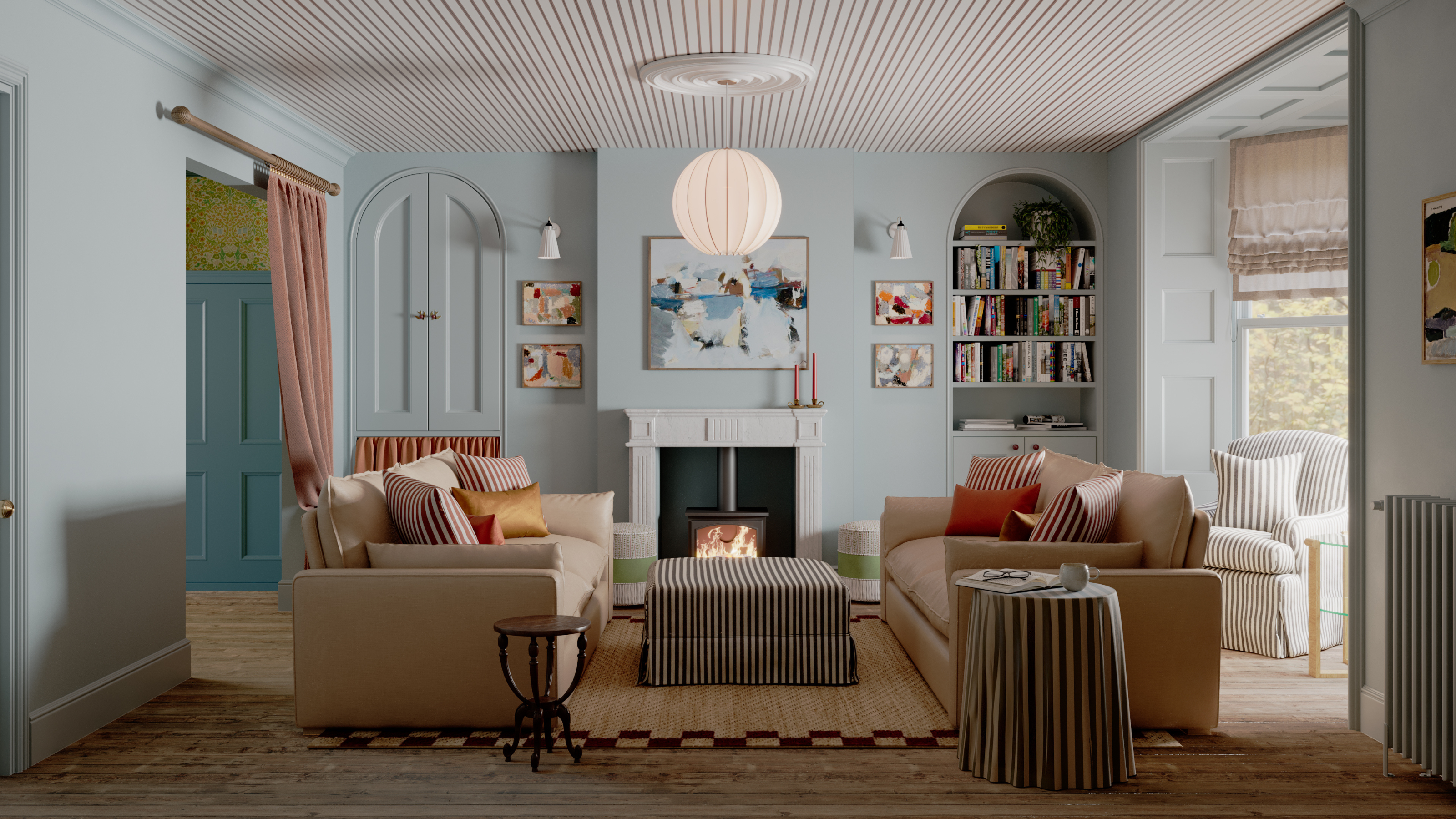
Contrary to popular belief, you don't always need a door. Of course, some situations call for one — to divide a space, and create structure within your layout — but sometimes, clever doorway curtain ideas can be a far better option, introducing softness, movement, and style to your space.
And doorway curtains are not a new trend, either. In fact, the 'interior door idea' spans cultures. In Japanese interiors, they're known as 'noren', fabric panels that divide rooms or mark entrances. In historical European design, the French word 'portière' is often used to describe ornate curtains hung over doorways to prevent drafts.
"They're a design detail that shouldn't be overlooked," interior designer Rebecca Hughes explains. "Used thoughtfully, they’re a soft space separator that seamlessly merges form and function." So, how can we make them feel fit for more modern spaces? Find six ideas from designers below.
1. Save Space in Smaller Rooms

In smaller living rooms, where space is especially tight, doors can often do more harm than good. And, they can often restrict the layout due to their wide-swing, adds interior designer Chris Taylor.
Because of this, a doorway curtain is often a better way to divide the room, creating privacy, saving space, and adding softness. "I think a curtain often feels like the finishing touch to a room, too — a soft textural layer that can instantly add visual interest and warmth," Chris muses.
Available to buy as a single curtain (all you need to cover a standard doorway), this velvet gathered curtain will offer a subtle sheer and softness in your space.
2. Style a Hallway Without Interrupting the Flow
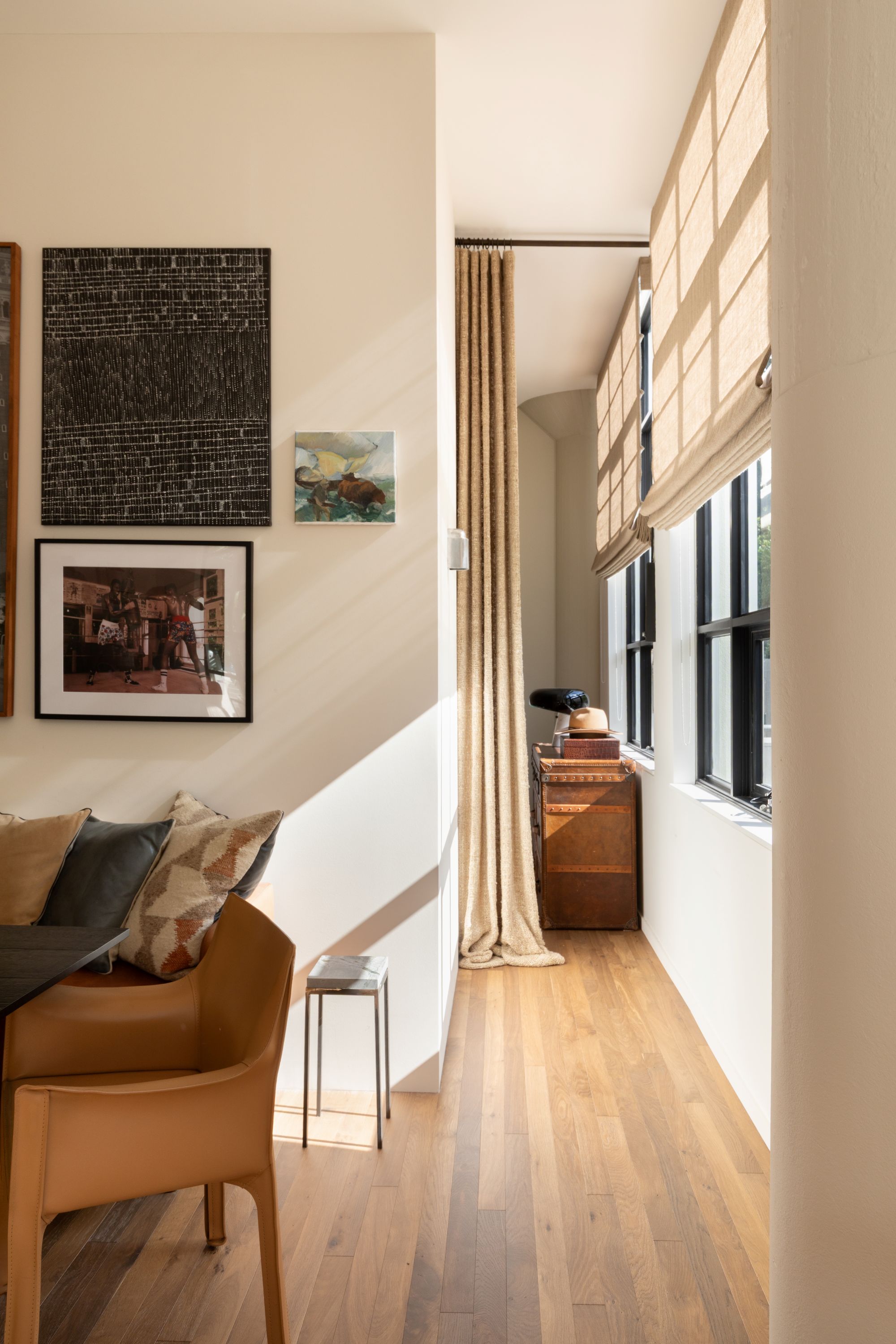
In a small hallway, where space is limited, a curtain can act as the ideal way to create some separation. Interior designer Lara Nancy Cupido says she often suggests this idea to clients as it's a relatively easy, practical, and stylish solution to tight spaces.
Not only that, but curtains can bring some interest to modern hallways — a notoriously difficult area to style in the home. The space shown above, designed by Chris Taylor, demonstrates just that. "A full height drape adds great visual drama and accentuates the architecture," Chris says. And because of the curtain's height, it even gives the illusion of a larger space.
When the curtain is pulled back, a sense of openness is established in the hallway. But when closed, "you have complete privacy without the heaviness of a solid door," Lara adds.
3. Use a Doorway Curtain to Hide a Closet
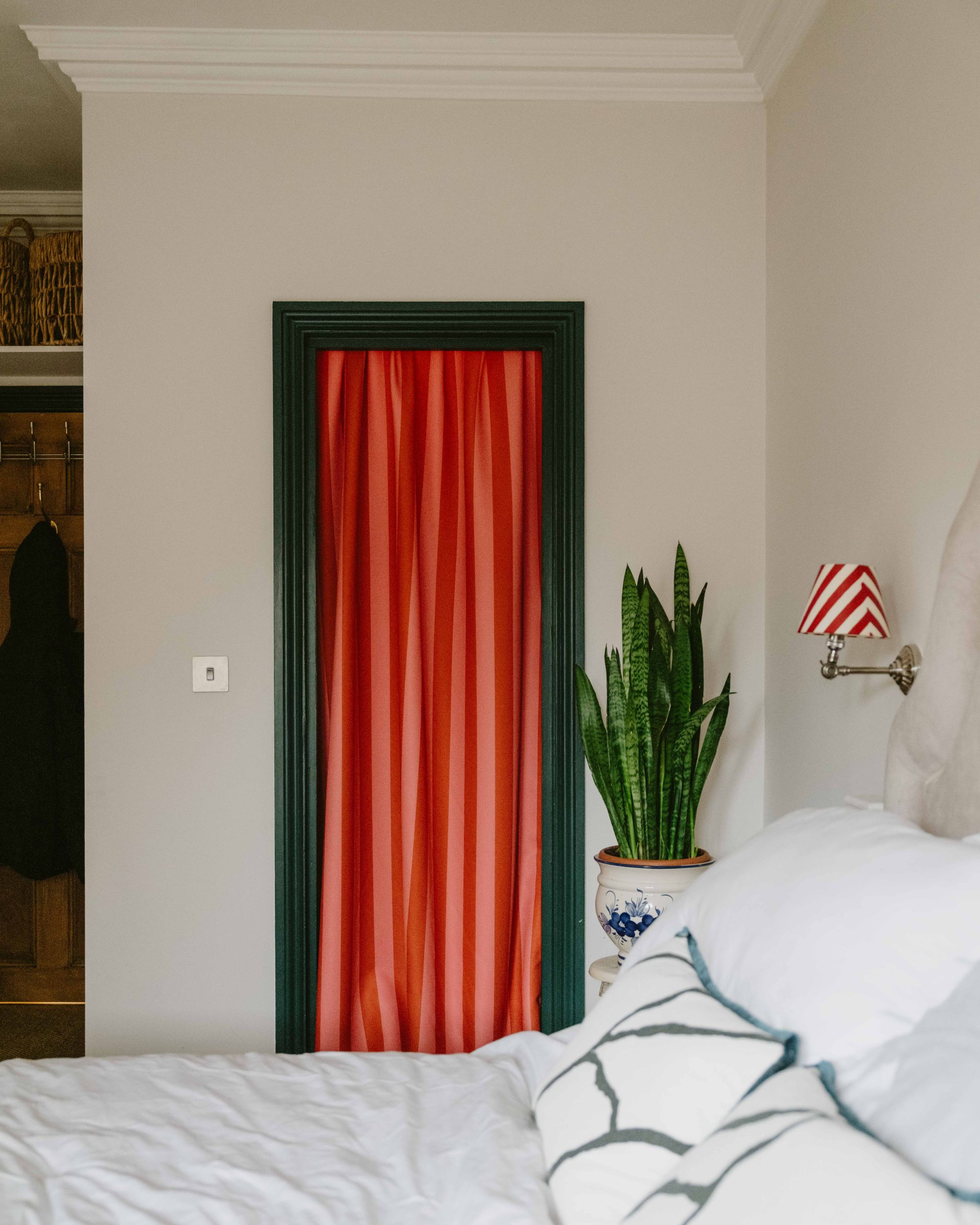
Curtain closet ideas can completely change the vibe of a bedroom, for the better. "Curtains work best where a traditional door would feel too restrictive," says Raymond Yang, founder of curtain brand Deconovo, and concealing a small bedroom closet is the perfect example.
In this instance, a doorway curtain idea rather than a solid door saves a significant amount of space, while also adding a touch of personality.
"Curtains also allow for a more customizable aesthetic that's cohesive with the room decor and can easily be interchanged with different colors, opacities, and layering," says Raymond.
While there are dozens of colors and fabric options, this striped pattern from Colours of Arley (shown in the space above) feels bold and playful, and hard to go past!
4. Subtly Separate an Ensuite with Doorway Curtains
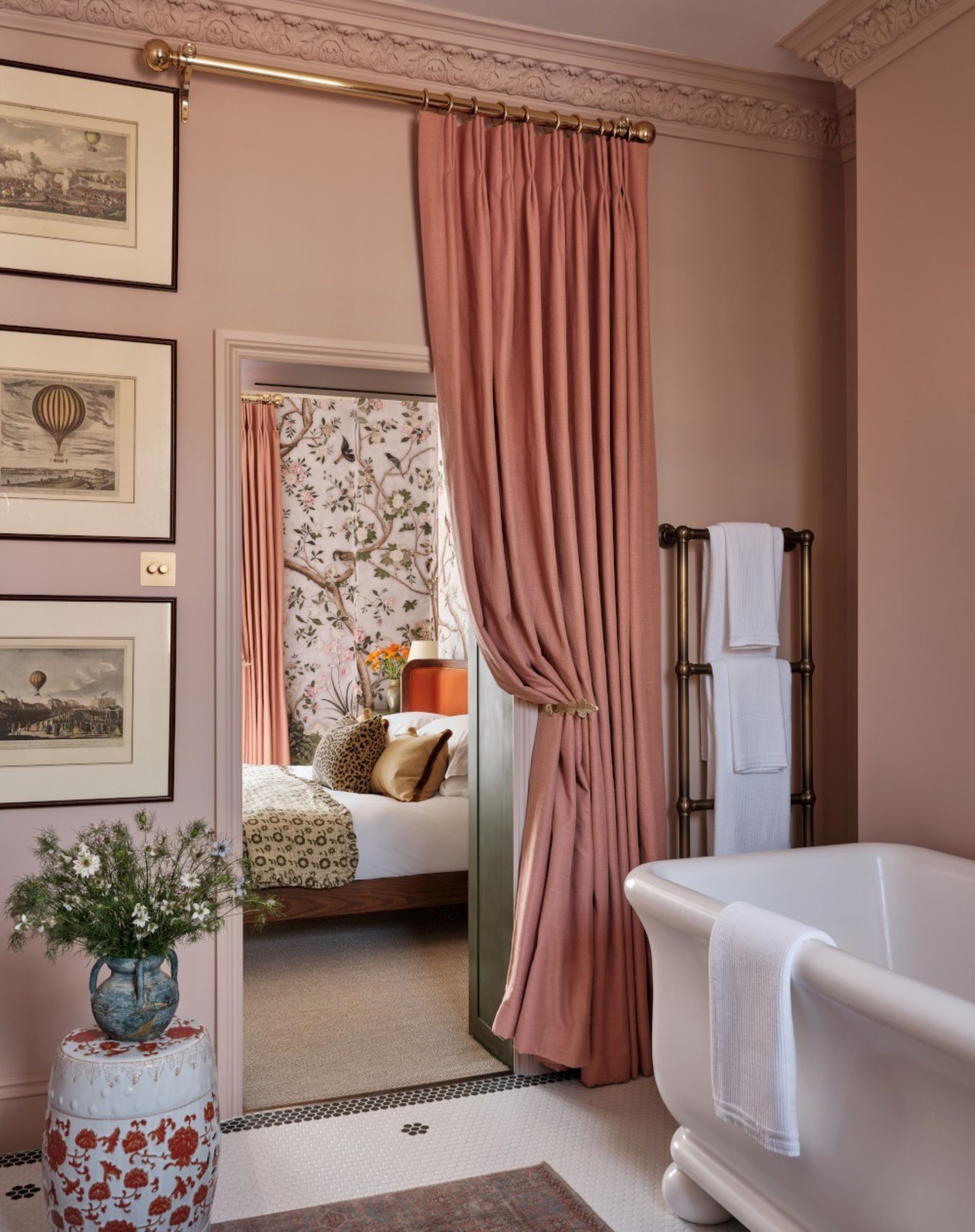
Does an ensuite bathroom really need a door? It's a hotly debated question. And perhaps a doorway curtain idea is the perfect middle ground? It will ensure a level of privacy while simultaneously maintaining a connection between the rooms.
In the space above, designed by Rebecca Hughes, the pink doorway curtain can easily become a room divider if need be, but when tucked away, it tastefully frames the view into the bedroom. "[Curtains] allow for greater flexibility in layout, can enhance acoustics, and introduce a luxurious tactile element," adds Rebecca.
5. Layer a Curtain Over a Doorway for Warmth
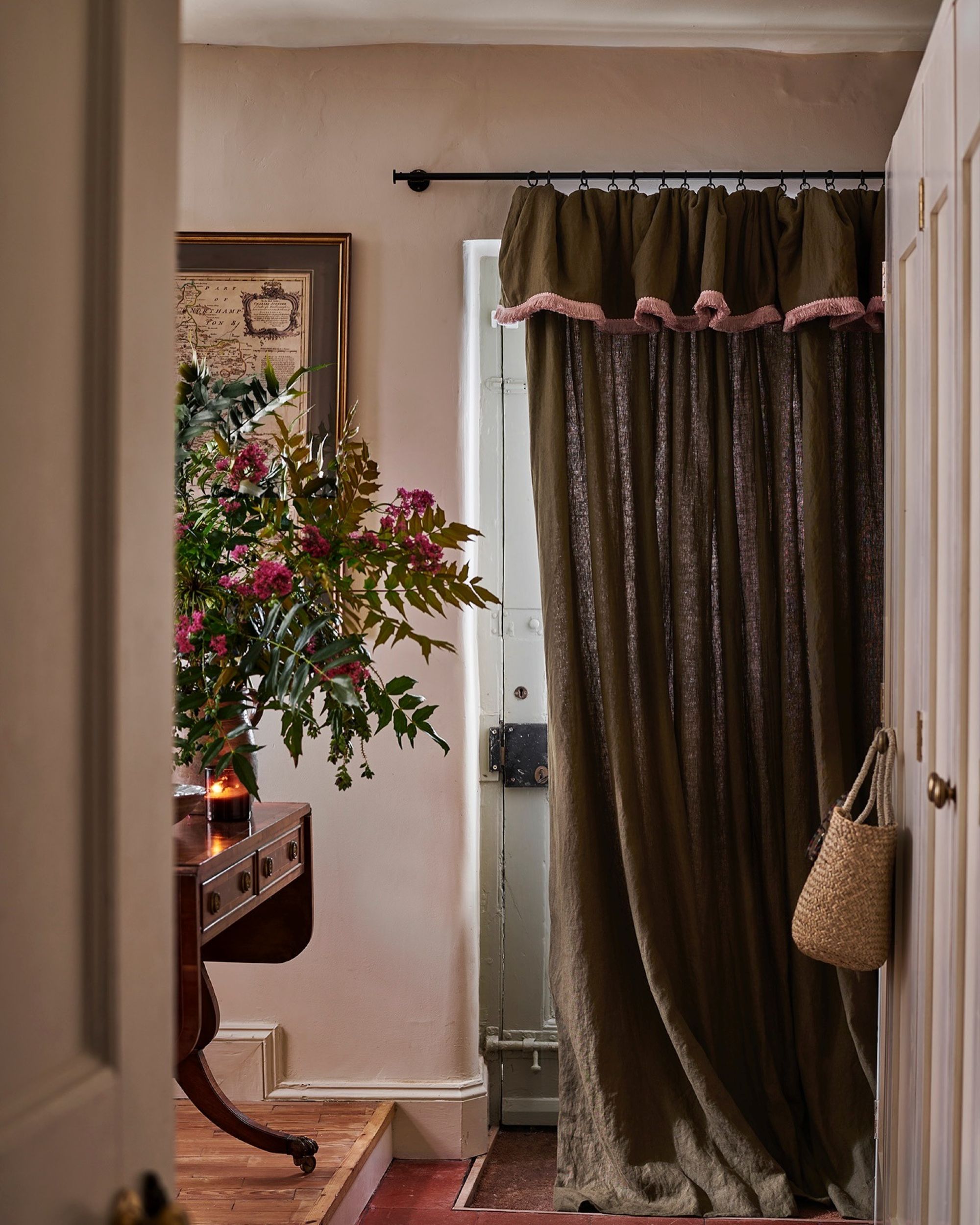
The most typical example of a 'portière', a curtain layered over a front door helps to keep warmth in, drafts out, and adds privacy for doors that feature glass. Chris Taylor adds that curtains can also block unwanted light from outside, whether that be daytime sun or nighttime streetlights.
Aside from their practicality, doorway curtains on the inside of exterior doors can also serve as a decorative accent, adding a little drama to your space. As guests arrive in your home, it'll feel like they're entering another world as they tuck under the curtain — a grand entrance, if you will.
To really play into the drama of exterior door curtains, opt for a style in a dark chocolate brown shade. This curtain will enhance the look of your entryway with its rich depth.
6. Doorway Curtains to Conceal a Work Space
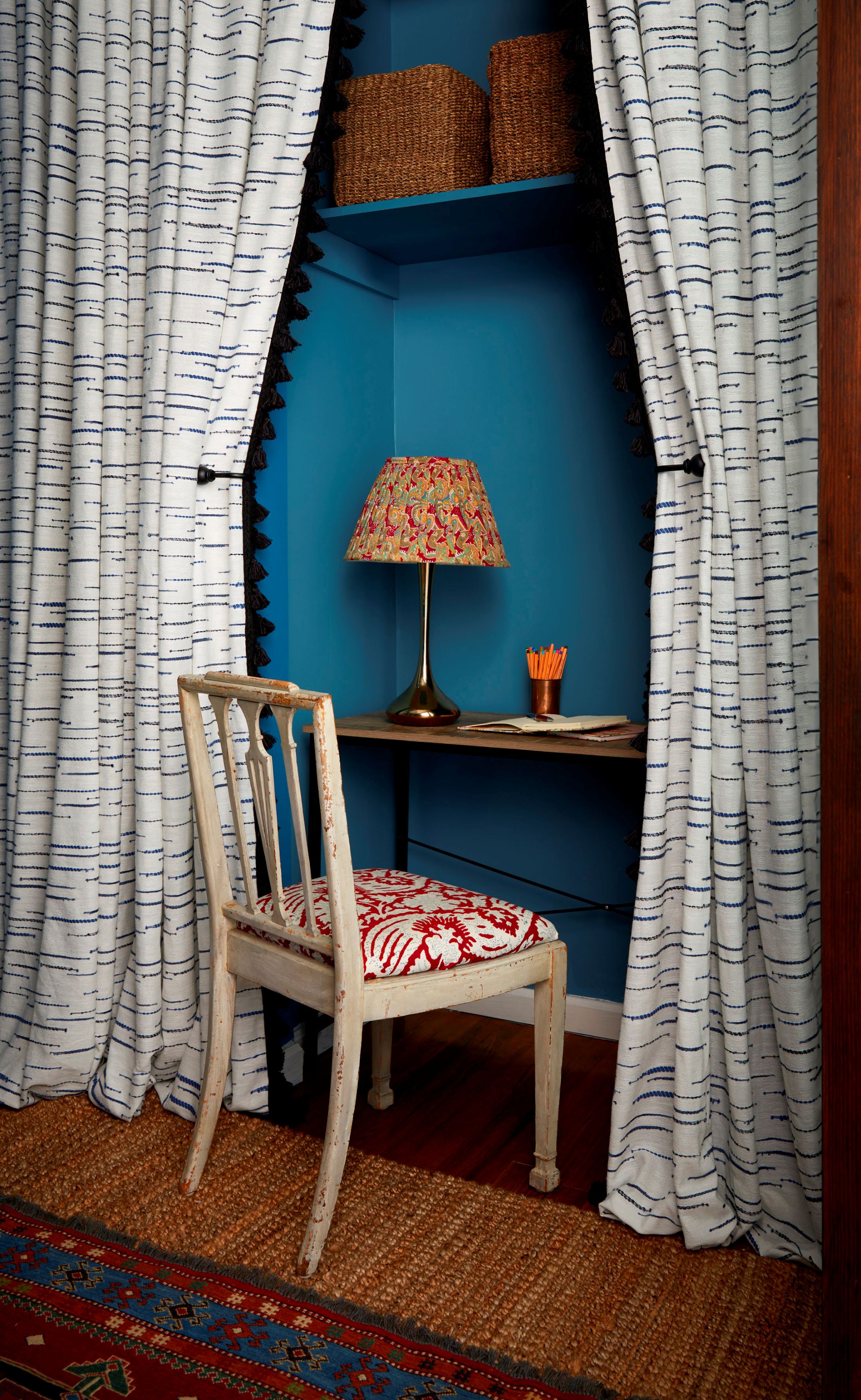
Pocket doors are an effective way to conceal a space, but you know what can be just as functional, and arguably more stylish? Doorway curtains. For a built-in work space, doorway curtains can delicately frame the space when open and elegantly hide it when not in use.
In the space above, interior designer Tara McCauley concealed a workspace in the guest bedroom behind a curtain. "The curtains add softness and texture to the room, and create a beautifully dramatic 'reveal' when drawn open to reveal the elevated work-from-home setup," she says.
FAQs
What Materials Are Best for Doorway Curtains?
When it comes to doorway curtain ideas, it's worth considering the material you use, as well as its style. This could be inspired by the other decor in the space, or its intended function.
Chris Taylor recommends linen. "It's a classic choice and feels at home in both formal and casual spaces," he says. Linen can filter light quite nicely, and it's also a breathable fabric that will keep your house cool in the summer months and warm in the winter months.
Another good choice is cotton, says Raymond Yang. As a light and breathable fabric, cotton won't overwhelm your space, but because of its tight weave, it's usually more opaque than linen, which can benefit a doorway curtain's purpose of dividing two spaces.
Livingetc's interiors editor Emma Breislin has installed a doorway curtain in her own home. "I went for a heavy double-sided velor fabric, as I wanted it to not only add style, but also to absorb sound and help to regulate the temperature of a space, and a lighter fabric wouldn't do that," she says.
"In rooms where more privacy is needed, opt for a heavier linen or velvet material," adds Raymond — especially in dark colors to really lean into the moody ambience.
Are There Downsides to Doorway Curtains?
While doorway curtain ideas seem like an interesting take, they do have some drawbacks. "Curtains lack the sense of security and formal division that you want in a space sometimes," says Chris. For instance, a solid door might be better suited for a bedroom or bathroom to ensure both security and privacy.
Rebecca Hughes adds limited noise reduction as another downside to curtains, noting that "The choice ultimately hinges on the balance between form and function within a given space."
Whether you choose a doorway curtain or a traditional door, consider the purpose and requirements of your space. This can help you make the right decision.
Doorway curtain ideas look best when they are kept clean. So, how do you clean curtains without taking them down? We asked the experts to share their tips and tricks on hassle-free curtain cleaning.







